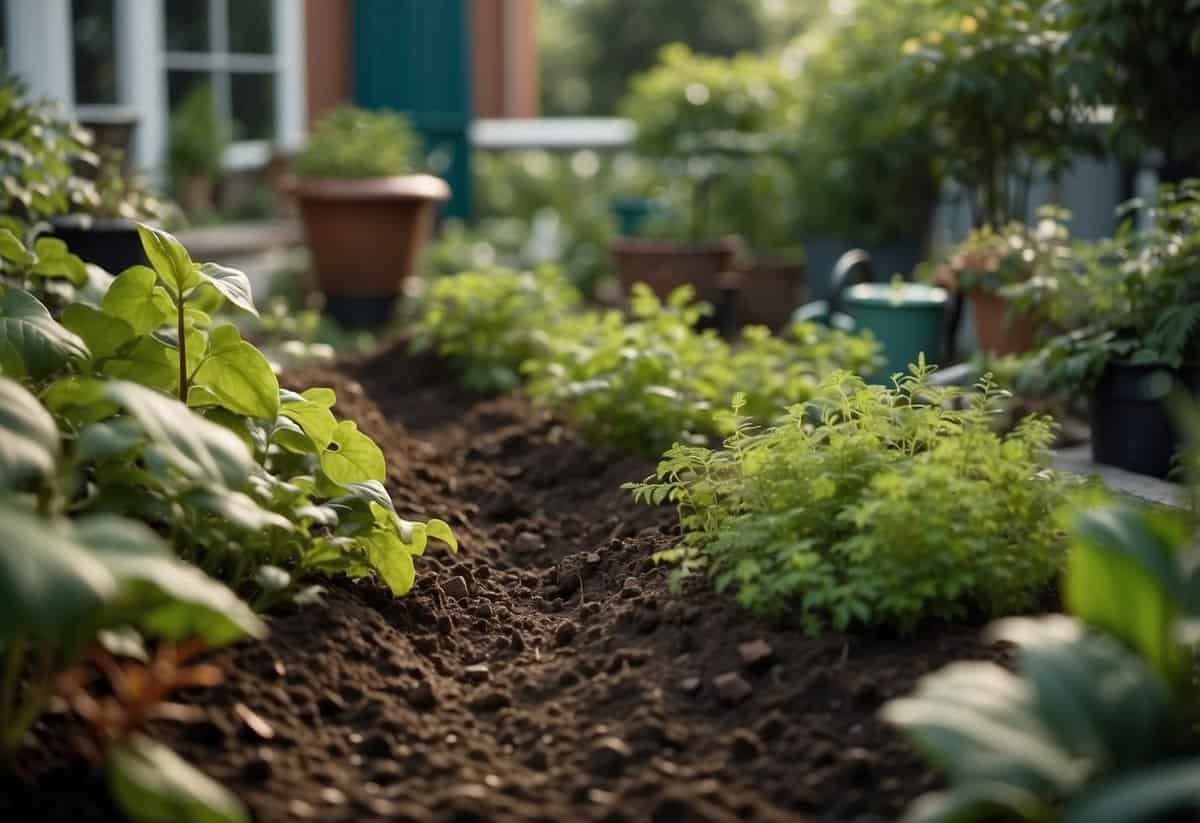Garden Tips: Simple Tricks for a Blooming Backyard
Gardening can be a rewarding and enjoyable hobby, whether you’re a beginner or an experienced green thumb. Learning a few tips can help you make the most of your gardening efforts and enjoy a beautiful and healthy garden. It doesn’t take much to get started, and with a little guidance, you can grow anything from vibrant flowers to tasty vegetables.

What are the best ways to ensure your garden thrives? In this article, you’ll discover practical advice that covers everything from choosing the right plants to maintaining your garden effectively. These tips will help you create the garden you’ve always dreamed of, no matter the size of your outdoor space.
1) Prune Regularly

Pruning helps your plants grow strong and healthy. Trim back any dead or overgrown branches to encourage new growth.
Besides improving appearance, pruning keeps plants from getting too crowded. This lets sunlight and air reach all parts of the plant.
Make sure to use clean, sharp tools for the best results. Regular pruning keeps your garden looking its best year-round. For more detailed pruning techniques, check out this guide.
2) Use Organic Compost

Organic compost is gold for your garden. It adds nutrients to the soil and improves plant growth.
To start, simply spread compost over bare spots or burnt areas on your lawn. This helps prevent soil compaction and adds important nutrients.
Mix some compost into your potting soil. It improves water retention in containers, but be careful not to use too much to avoid root burn. Check out more detailed tips on how to use compost.
3) Plant Native Species

Native plants are better for your garden because they are adapted to the local climate. This means they need less water and care.
They also help local wildlife, like birds and butterflies, by providing food and shelter.
Remove invasive species that can harm native plants by mowing or digging them out. Clear any new sprouts to keep them from growing back.
Choose plants that offer nectar, seeds, and berries. Be sure to plant them at the right depth and spacing to help them thrive. For more tips, check out this guide on native plant gardening.
4) Water in the early morning

Watering your garden in the early morning is the best time. This is because temperatures are cooler, and the sun is not as intense.
By watering in the morning, plants have time to absorb water before the day heats up. This can help them stay hydrated during hot afternoons.
Early morning watering also reduces evaporation, making sure more water reaches the roots. This is especially important during dry periods.
5) Incorporate Companion Planting

Companion planting means growing different plants together that help each other out. For example, tall corn can provide much-needed shade for lettuce during hot summer days.
This method also helps with soil fertility. Plants like beans add nitrogen to the soil, which benefits plants like tomatoes. It’s like a team effort in your garden!
You can also use companion planting to manage pests. Some plants, like marigolds, can keep away certain bugs. Try different combinations and see what works best for you. Check out more tips on companion planting to get started.
6) Mulch to retain moisture

Mulching is a great way to keep your garden soil moist. By adding a layer of mulch, you help prevent water from evaporating too quickly.
Aim for a layer that is 2 to 4 inches deep. This depth is just right to keep the soil damp while avoiding suffocating your plants.
You can use organic materials like straw, grass clippings, or wood chips. These materials will also break down over time and improve the soil. For more details, check out this guide on using mulch to retain soil moisture.
7) Practice Crop Rotation

Crop rotation helps keep your soil healthy. By changing where you plant your vegetables each year, you can prevent pests and diseases from taking hold.
It also helps balance soil nutrients. Some plants take a lot from the soil, while others add nutrients back.
Using crop rotation, your garden will stay more productive and require less fertilizer. Learn more about crop rotation here.
8) Utilize Raised Beds

Using raised beds can make gardening easier and more productive. You can control the soil quality, ensuring it’s rich and well-drained. Raised beds also warm up faster in the spring, giving you a longer growing season and earlier planting opportunities.
Plants in raised beds can be spaced more closely together since you don’t need to leave walking paths. This leads to a more efficient use of space and potentially larger harvests. Raised beds also keep weeds at bay, especially if you add a layer of cardboard at the bottom, which discourages weed growth and invites earthworms instead. To learn more, check out these beginner tips.
9) Use natural pest control

Maintaining a clean garden is one of the simplest natural pest control methods. Remove any leafy debris, dead plants, and decaying material as they can attract insects. This keeps pests at bay.
You can also make a DIY insecticide. Mix vegetable oil, mild soap, and water in a spray bottle. This helps control bugs like aphids and whiteflies.
Sprinkling food-grade diatomaceous earth around your plants works as a barrier for crawling insects like stinkbugs. This natural method is safe for your garden and effective at repelling pests.
10) Encourage Beneficial Insects

Adding beneficial insects to your garden protects your plants from pests. These insects prey on bugs that can harm your plants.
To attract these helpful insects, plant a variety of native flowering plants. Some great choices include marigolds, dill, parsley, and yarrow.
Avoid using pesticides as they can kill beneficial insects. Instead, try organic methods to control pests.
You can also install garden lights like solar-powered ones to keep certain helpful bugs like assassin bugs around at night.
Essential Soil Preparation

Proper soil preparation is key to a thriving garden. It involves testing soil pH and enriching the soil with the right nutrients.
Testing Soil pH
Testing soil pH helps you understand its acidity or alkalinity. Many plants need slightly acidic to neutral soil, with a pH between 6.0 and 7.0. You can buy a soil test kit from a garden center or use a pH meter for accurate results.
To test, take soil samples from several spots in your garden. Mix them and follow the instructions on your test kit or meter.
Adjustments Based on Results:
- Too acidic? Add lime to raise the pH.
- Too alkaline? Add powdered sulfur or aluminum sulfate to lower the pH.
Keep testing until your soil reaches the desired pH. This simple step ensures your plants get the nutrients they need.
Enriching the Soil
Enrich your soil to provide essential nutrients. Start by clearing rocks, weeds, and debris.
Loosen the soil to at least 8 inches. Add organic matter such as compost or aged manure. These improve soil structure and fertility.
Spread a 2-3 inch layer and mix it in well.
Nutrient Boosters:
- Compost: Offers a rich mix of nutrients.
- Aged Manure: Provides slow-release nutrients for sustained growth.
- Bone Meal: High in phosphorus, good for root development.
After adding these, consider a soil test to look for specific nutrient deficiencies. If your soil lacks nitrogen, use a nitrogen-rich fertilizer. This targeted approach keeps your garden healthy and productive.
Plant Selection and Placement

Choosing and placing plants in your garden is a critical step that affects the beauty and health of your garden.
You’ll need to think about the types of plants that match your soil and climate, and which plants grow well together.
Choosing the Right Plants
When selecting plants, start by considering the climate in your area.
Some plants need a lot of sunlight, while others thrive in shade. Check your garden’s soil type and pH level to ensure it matches the needs of the plants you want.
Annuals bloom for one season, while perennials come back year after year.
Think about plant size and growth habits. For example, small flowers fit well in borders, while trees and shrubs add height.
It’s helpful to choose plants with varying flowering periods to keep your garden colorful all year.
Companion Planting Tips
Companion planting is about pairing plants that help each other grow. For example, planting basil near tomatoes can help improve growth and flavor. Marigolds deter pests from your vegetable garden.
Group plants with similar water and sunlight needs. This makes it easier to care for them and ensures they thrive together.
Mix plants with different root depths to keep the soil healthy. Shallow-rooted plants can be combined with deep-rooted ones to make efficient use of soil nutrients.
Watering Strategies

To keep your garden healthy, it’s essential to water plants efficiently and choose the right drought-resistant species.
Efficient Watering Techniques
Use a soaker hose or drip irrigation to water plants directly at the root zone. This reduces evaporation and ensures that water reaches where it’s needed most.
Watering early in the morning or late in the evening can also minimize water loss from evaporation.
Avoid watering during windy conditions as it causes uneven water distribution.
For lawns, set up sprinklers in the early hours to ensure better absorption.
You can also use a rain gauge to monitor and adjust the amount of water your garden receives for optimal growth.
Additionally, mulching around plants helps retain soil moisture and keeps roots cooler.
Organic materials like straw, wood chips, or compost are excellent choices for mulch.
Drought-Resistant Plants
Choosing drought-tolerant plants can significantly reduce the need for frequent watering.
Plants like lavender, succulents, and ornamental grasses thrive in low-water conditions. Native plants are often adapted to local climates and require less water once established.
Perennials such as yarrow and Russian sage can handle dry spells well.
For vegetables, consider growing varieties like zucchini, okra, and black-eyed peas, which are known for their drought resistance.
Grouping plants with similar watering needs together can also optimize water usage.
This method is known as hydrozoning. It ensures that each plant receives the right amount of water without waste.







